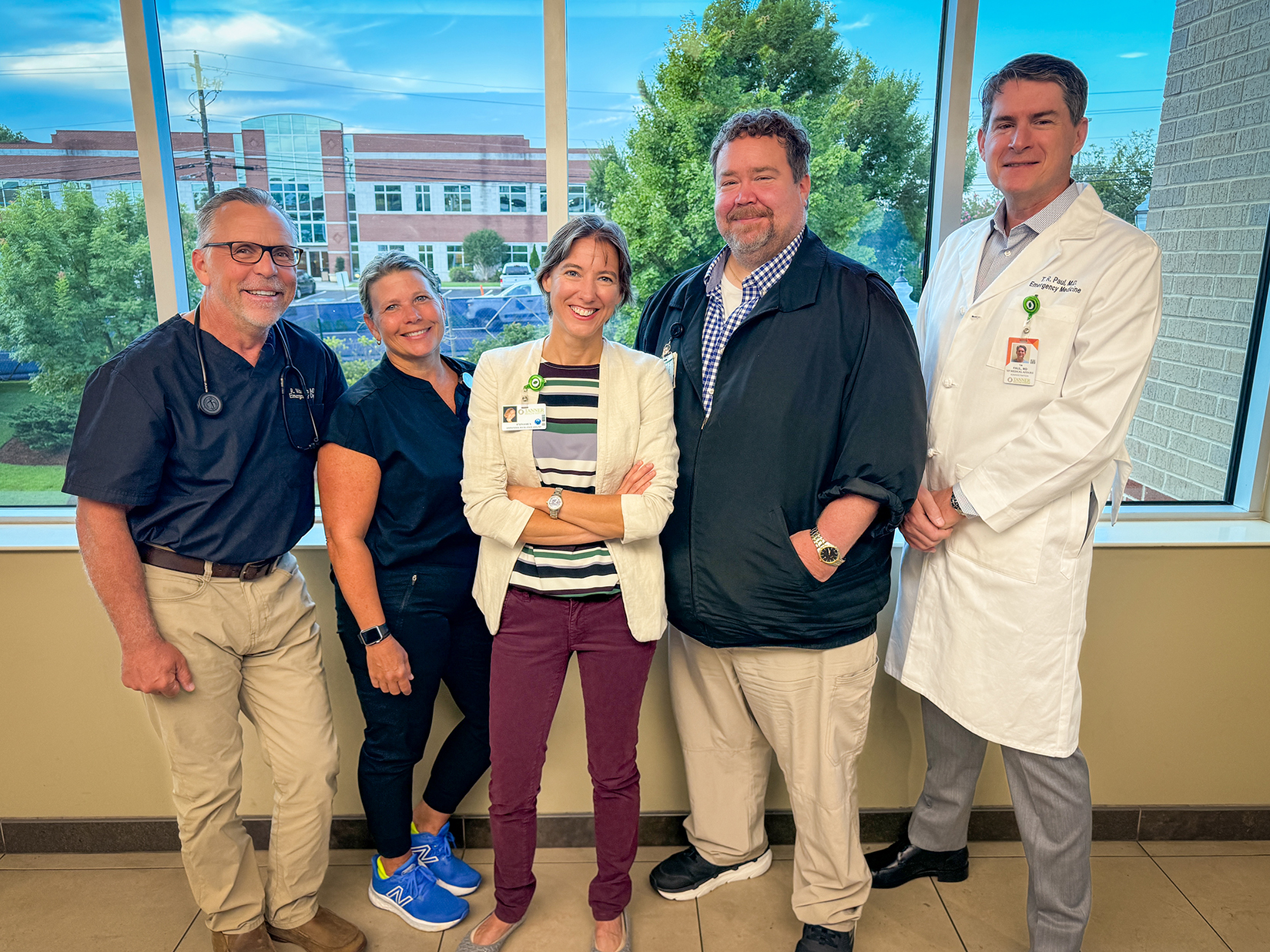In the face of unprecedented challenges brought on by the COVID-19 pandemic, Tanner Health has redefined the standard of emergency care. A collaborative workgroup made up of members from the emergency department and auxiliary medical services, led by Process Improvement Specialist Stephanie Shar, pioneered a comprehensive, patient-focused approach to optimize resources, enhance safety and ensure timely, effective emergency care for all at Tanner Medical Center/Carrollton in Carrollton, Georgia.
In November 2023, Shar began analyzing the current state of the emergency department and discovered that it was operating extremely well. Despite its success, the unit often battled overcrowding and found much of its available space occupied during periods of higher-than-usual admission rates, which negatively impacted overall efficiency. These issues became the primary drivers for the project, and the cross-functional workgroup started to research innovative improvement ideas.
Shar pitched her vision for improvements, which was quickly supported by Tim Paul, MD, vice president of medical affairs for Tanner Health, and Michelle Hoehn, DNP, NE-BC, MSRN, senior vice president and chief nursing officer for Tanner Health.
“By harnessing these innovative strategies and levering the tireless efforts of our performance excellence team, Tanner is meeting the demands of the present and preparing for the future,” said Dr. Paul. “We’re setting a new benchmark for emergency care that is efficient, patient-friendly and — most importantly — safe.”
Several key initiatives have been instrumental in improving throughput times and ensuring timely, effective care:
- Express Care: By initiating tests and protocols upfront for minor issues, the team can gather necessary information before the patient even sees the doctor, reducing overall treatment time.

- Split Flow: This model allows mobile and able patients to be examined in a bed and then moved to a different area to await results, freeing up valuable bed space for others.
- Fast Track: Lower acuity cases are treated as efficiently as possible; patients move to a separate waiting room to receive results after completing necessary tests or scans.
- Triage Based on Severity: Patients are triaged based on the severity of their condition. Level 1 cases (cardiac arrest, stroke, major trauma) receive immediate attention, and they are followed by Level 2 (chest pain, shortness of breath) and Level 3 (gallbladder issues, kidney infections, gastroenteritis).
The strengths of the emergency department prior to this improvement project provided a strong foundation for these enhancements and allowed the workgroup to pilot even more ideas. To make the intake and treatment process more efficient and patient-friendly, the team also implemented the following suggestions:
- Hospital Guide Service: A customer service representative helps patients in and out of their cars, answers questions, gives directions, participates in rounding and spot-checks the lobby.
- Express Care Expansion: Increased from one express care room to three, improving turnaround times and physician productivity.
- Dedicated Express Care Provider: A dedicated provider responsible for express care areas ensures they run as efficiently as possible.
- Specialized Treatment Areas: Separate areas are designated for specific patient populations and specialized care to maintain availability of general treatment rooms for patients needing more extensive care.
- Vertical Patient Rooms: Space is set aside for patients who do not require patient care in a bed, allowing for quicker discharges and freeing up other patient rooms.
- Rapid Triage Implementation: The triage process was revamped to ensure faster patient assessment, reducing the time to see a triage nurse from 40 minutes to around nine minutes. This prioritizes patient safety and minimizes waiting times.
For Shar and her colleagues, these efforts have paid off, improving the patient experience and cutting down on treatment times.
“Patient satisfaction scores have reached their highest levels in recent history, and the time it takes for a patient to receive care and be discharged from the hospital has been significantly reduced,” said Shar. “The ‘treat to street time,’ as it’s sometimes called within the emergency department, is now four hours or less in most cases”
Motivated by a commitment to provide the highest-quality care to every patient, Tanner continues to improve its emergency care processes. With support from the executive team, who have generously provided resources for upgrades and expansions, and the groundbreaking strategies developed, Tanner Medical Center/Carrollton is well-positioned to weather the ongoing challenges of the post-pandemic landscape. These innovations have the potential to be shared with smaller hospitals within the system, extending the benefits of these process improvements to even more patients in need.
By continuously improving and adapting, Tanner is setting a new standard for efficient, patient-friendly and life-saving emergency care in the west Georgia community.